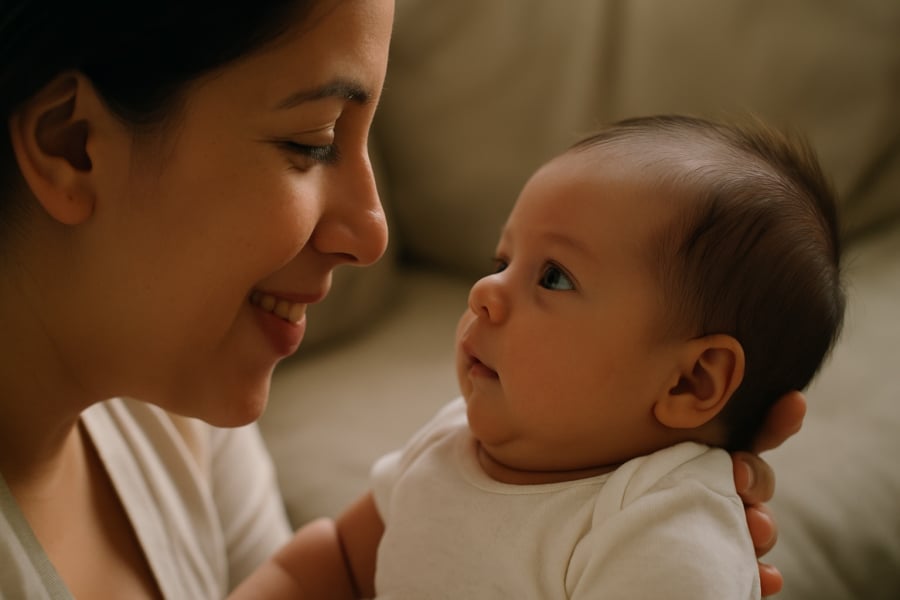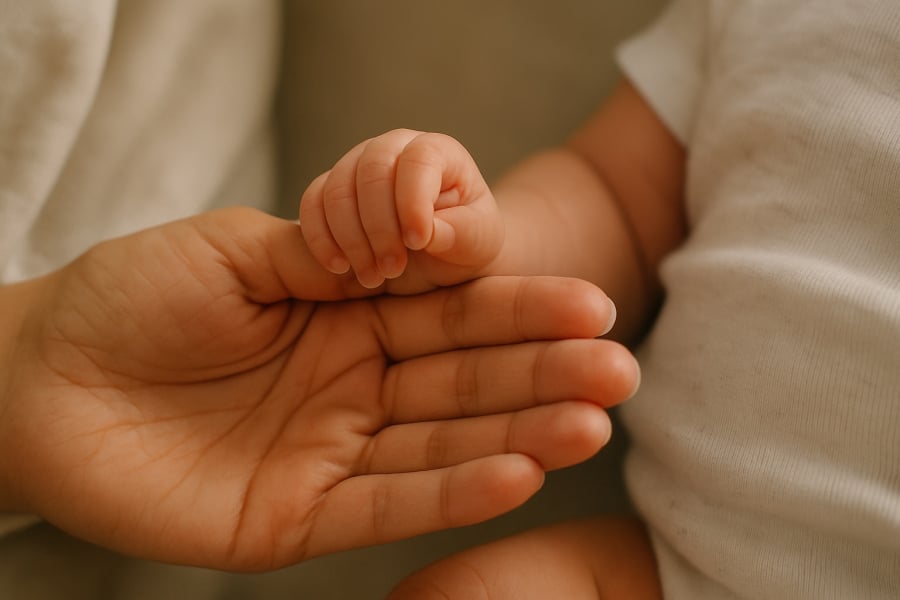Even in their earliest months, newborns may seem too tiny to understand love. But in reality, they know how to love from the very first days of their lives, in their own unique way. This love needs no words; it is expressed through eye contact, smiles, clinging to their mothers, and the little moments they share with their loved ones.
A newborn’s gaze – an invisible bond between mother and child
Right from birth, newborns know how to communicate through eye contact. According to psychologists, when a baby stares intently at its mother, it is not just an unconscious action but also a way for the child to affirm its love for her.
Numerous studies in developmental psychology reveal that, from the very first week after birth, newborns can recognize their mother’s face. A baby’s intense gaze into its mother’s eyes is not merely an instinctual reflex but also a way for the infant to feel closeness, safety, and attachment—the foundational building block of the mother-child emotional bond.
To me, this feels like magic. When my little daughter was just a few months old, I would often sit by her crib and watch her sleep. Occasionally, as she opened her eyes, she would look straight at me, as if sending a message: “Mom, I’m here, and I need you.” Those moments made me feel closer and happier than ever before.

When a baby clings to its mother, it’s saying, “I need you”
Experts believe that the action of “clinging” is a natural expression of love. When a newborn clings to its mother, it’s not just a sign of dependence but also a way for the child to demonstrate deep trust and attachment.
Pediatric specialists explain that newborns are not yet capable of self-protection, so their natural instinct is to turn to their mother as their first “safe haven.” The baby’s clinging is not a sign of weakness but rather an expression of absolute trust and the need for love and protection during these early years.
As a mother, I’ve faced challenges when my child constantly demanded my attention. There were times when I felt exhausted and wanted to give up. But then I realized that every time my child clung to me, she was telling me: “Mom, I feel safest with you.” This clinging made me understand that love is not just about happy moments but also about companionship and sharing during the toughest times.

Babies can’t speak, but they sense emotions: the earliest language of feelings
Another fascinating discovery I’ve made is that newborns can sense and react to the emotions of those around them. When I’m happy, my baby smiles brightly, and when I’m sad, she seems to become more subdued. This is not a coincidence but rather an innate way for the child to express empathy.
Even though they can’t yet comprehend the complex emotions of adults, newborns are capable of perceiving and responding to changes in the moods of their caregivers. Researchers believe this is an innate part of how infants establish their first emotional relationships—the foundation for their future social and emotional development.
For me, each of these moments serves as a reminder that love is not just a one-way street but a two-way interaction. I’ve learned to listen, observe, and sense my child’s emotions, thereby building a stronger relationship.
From protection to companionship – a mother’s journey of love
As a child grows, the nature of love evolves. Gentle hand-holding and intense gazes give way to independent steps and exploration of the world. However, this doesn’t mean that love diminishes; instead, it deepens and becomes more diverse.
Love is not just about sheltering a child at every step but also about trusting and encouraging them to boldly venture into the world. When parents accompany their children without controlling them and listen without imposing, that’s when love becomes a solid foundation for the child’s self-reliance and confidence.
I recall when my daughter took her first steps; she often hesitated and looked at me. When I encouraged her with my eyes and a smile, she became bolder and walked more confidently. Those moments taught me that love isn’t just about sheltering our children but also about accompanying and supporting them as they grow.
Conclusion
A newborn’s love is not merely an emotion; it’s a long journey, a process of understanding and empathy. Even though infants can’t speak, they express their love through eye contact, smiles, and daily actions. Cherish and listen to this “language of love,” for it is the best way to connect with your child and nurture a profound relationship.
“Mom, I love you in this way, in that way, and in every way I know how!” – This is the silent message of love that every child wants to convey to its mother.






























